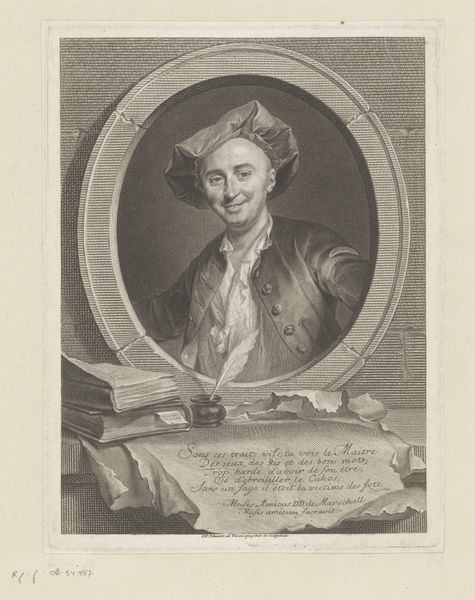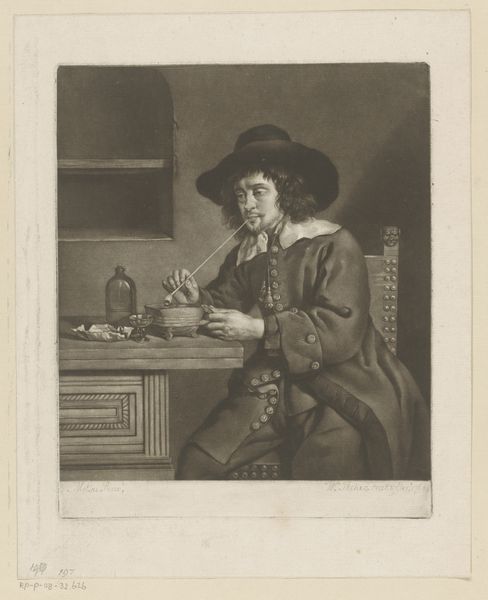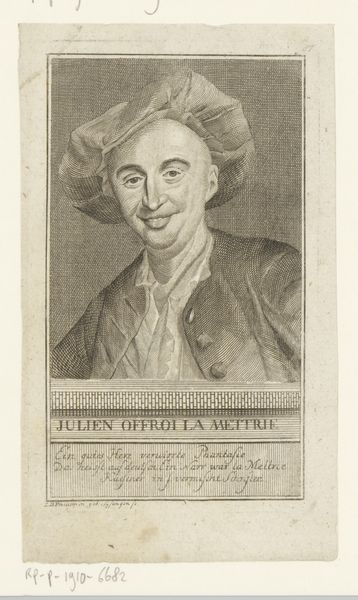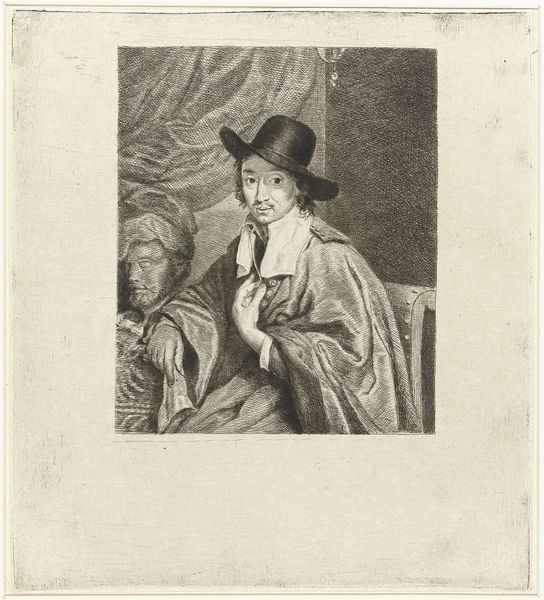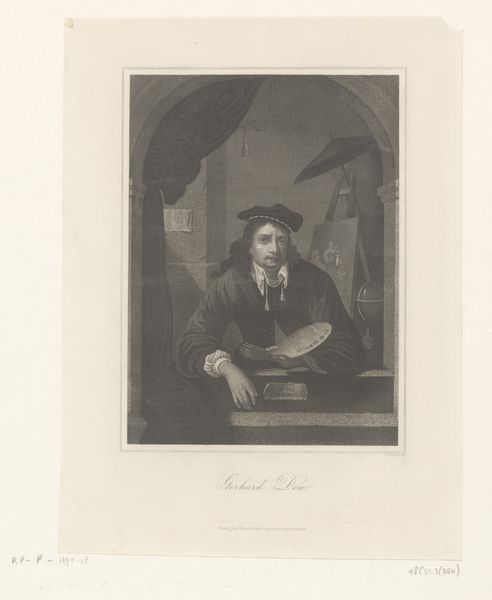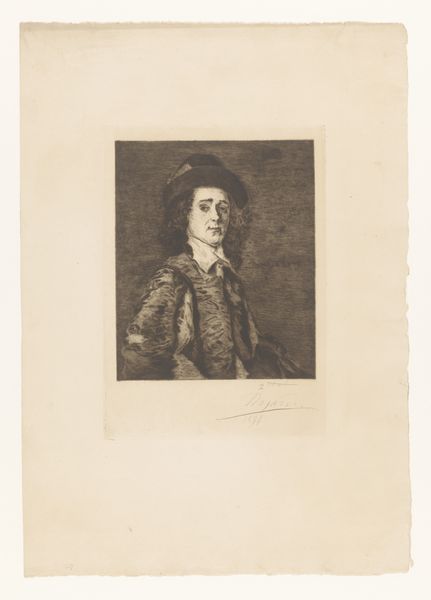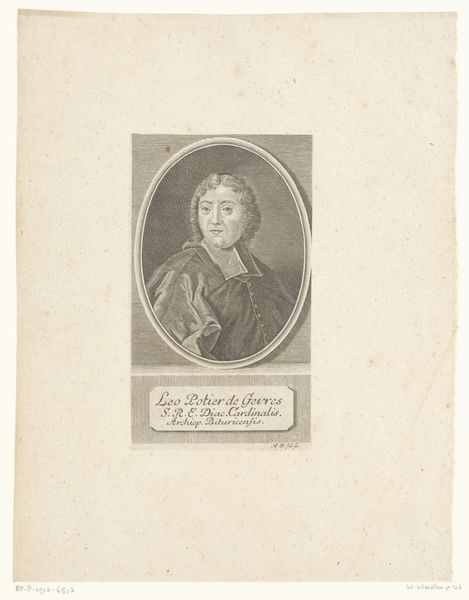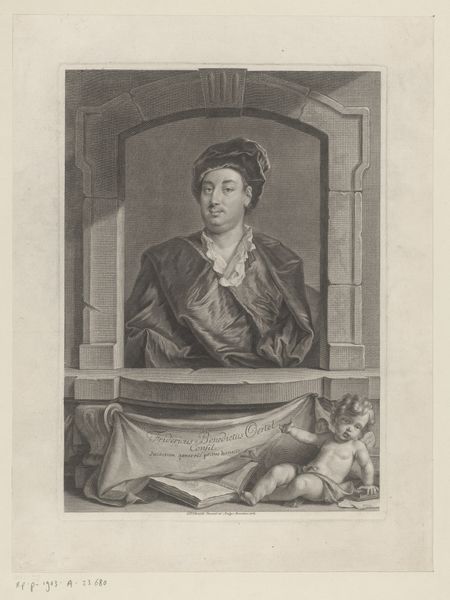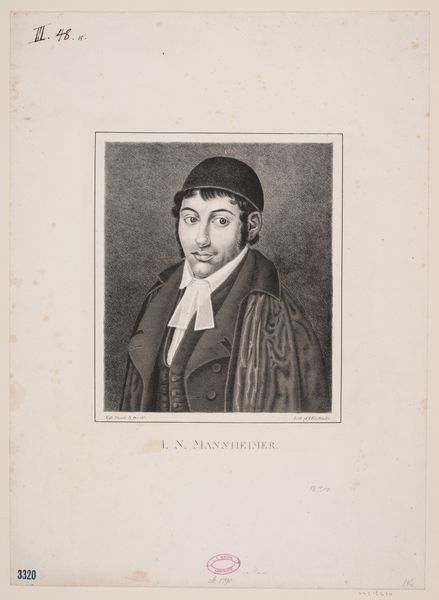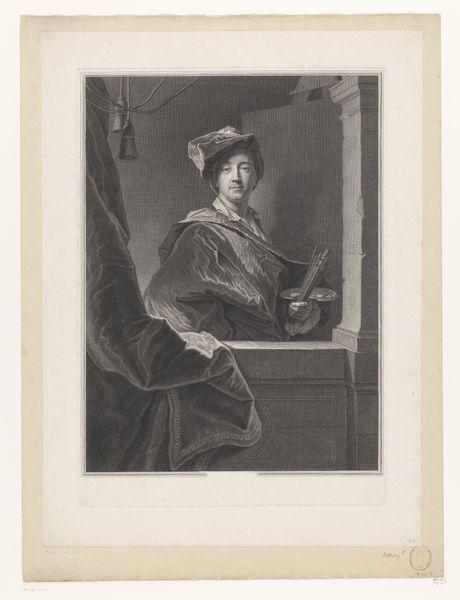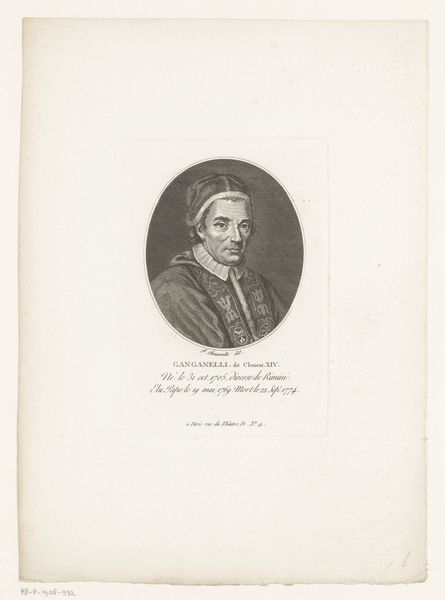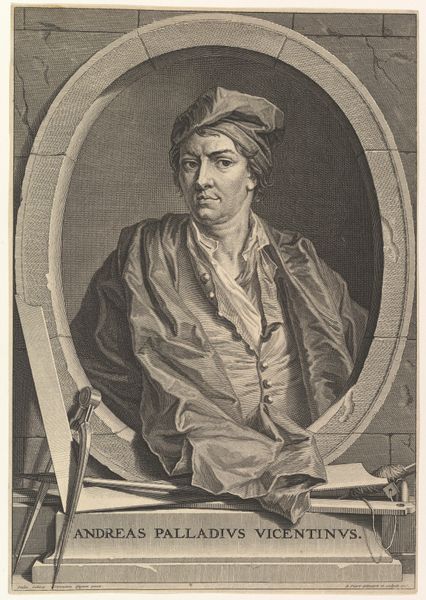
print, engraving
#
portrait
#
baroque
# print
#
engraving
Dimensions: height 460 mm, width 310 mm
Copyright: Rijks Museum: Open Domain
Curator: My initial reaction is this is rather melancholic for a portrait. Editor: Well, let's dig a little deeper. This engraving, “Portrait of François de Troy," comes to us from Pierre Drevet, dating roughly from 1673 to 1738. It's part of the Rijksmuseum's collection and embodies the Baroque style, wouldn’t you agree? Curator: Absolutely, but notice the subdued tonality. Even within the Baroque framework, there's a quietness, an introspection that seems at odds with the period's typical exuberance. Perhaps it's the engraving medium itself; it softens what might have been bolder in paint. The artist's gaze is directed right at the viewer, but it isn't inviting so much as contemplative. Editor: Precisely! Think about what portraiture represented then. It wasn’t just about capturing a likeness. It was a carefully constructed representation of status, skill, and intellectual engagement. Holding a palette and maulstick identifies him firmly, of course, but notice how simply it is done. We often read portraits of artists holding brushes as arrogant claims to genius, and there’s nothing like that here. The presentation is more subtle, more considered. The artist looks competent, certainly, but the tone suggests the quiet dedication that lies behind true art. Curator: So the image avoids the flamboyant posturing we might expect, inviting instead, as you point out, deeper reading. That dark backdrop seems heavy and is at odds with his garb that almost looks as if he has just arrived to work, which would certainly create this interesting and thought-provoking image. It is all communicating something profound beyond the immediate identification of the sitter. Editor: Exactly, and that's where I think the true innovation lies. It's not merely a celebration of talent; it's a meditation on the artistic process and the artist's role in society. Curator: Yes, now I’m more able to discern the original intentions of Drevet in this carefully arranged setting that evokes feelings about memory, and our past perceptions about Baroque period art as being rather full of flair. Editor: So, even in a seemingly straightforward portrait, we unearth layers of social and artistic commentary. It makes one rethink how art functions within specific historical contexts. Curator: Indeed, revealing how visual codes reflect and shape cultural narratives across time. This engraving, perhaps surprisingly, rewards contemplative viewing.
Comments
No comments
Be the first to comment and join the conversation on the ultimate creative platform.

